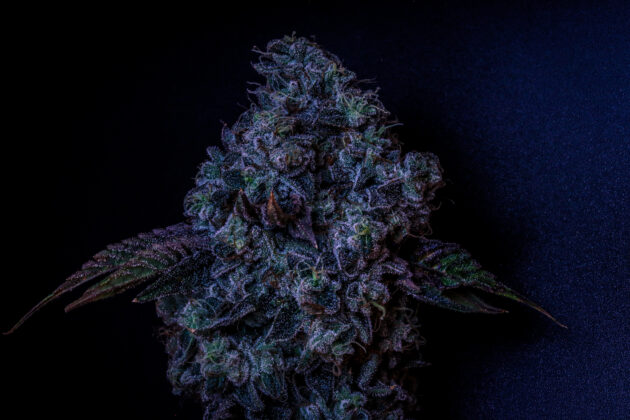
by Grow Up Conference | Oct 18, 2024 | Media Partners, The New Agora
International Public Notice: The Source of All Rights
by Anna Von Reitz
Our Natural and Unalienable Rights declared and claimed and cured via The Declaration of Independence, not any Constitution, are a result of our nature as independent living beings blessed with freewill and mobility.
Our ability to speak declares our right to speak, just as our ability to hear declares our right to hear. Our ability to reason and choose between options is the hallmark of our free will. Our ability to discern truth from falsehood conveys our moral faculties and the right to exercise them.
There is, therefore, the Kingdom of Nature and of Natural Rights, which pre-dates and stands over any Law of mankind.
Give your attention to this source of all rights, for it is the bedrock of our common existence and mankind’s natural social fabric.
It’s only when men tamper with this Natural Law to deny the Natural Rights of others, that arbitrary and capricious injustice follows, and the contracts and conventions of men attempt to overcome both the Nature of Mankind and the Natural Law that governs us.
Our American Government wisely admits and supports the Natural Laws that govern our world, our nature, and our existence. We accept the fact that our species is mortal and we do not seek to unnaturally extend the life of an individual by impersonating them.
We uphold the Natural and Unalienable rights of living people, regardless of age, sex, color, national origin, religion or any other factors that foreign governments have used to justify the denial of the Natural and Unalienable Rights of individuals.
Our Federal Subcontractors universally deny themselves the Natural and Unalienable Rights by subjecting themselves to Social Contracts that disrespect Nature. By virtue of their choices, they elect to act as persons and to be impersonated.
They agree to indentured servitude for a period of years, known as a tour of duty, or they agree to enslavement as government servants, but in no case do they possess themselves the Natural and Unalienable Rights they are hired to protect.

by Grow Up Conference | Oct 18, 2024 | Media Partners, Stratcann
Aurora Cannabis could end up paying more than $8 million (US) to put to rest allegations that it inflated its stock price in order to mislead investors.
On October 10, 2024, a US federal court judge gave preliminary approval to an $8.05 million cash settlement between Aurora Cannabis Inc. and investors who say Aurora misled them with a $21.7 million round-trip, “sham transaction” between Aurora and another Canadian cannabis company called Radient Technologies Inc.
Radient Technologies Inc. was a Canadian extract maker with ties to Aurora, alleges the lawsuit. Radiant revoked its cannabis licence in 2023. In 2017, Aurora made a CAD$6.2 million investment in Radiant.
A final approval hearing has been set for January 28, 2025. The settlement would apply to investors who purchased Aurora’s common stock on the New York Stock Exchange between October 23, 2018, and February 28, 2020.
For their part, Aurora has denied these allegations. The plaintiffs alleged that Aurora came up with this transaction in order to achieve a desired projection of positive adjusted EBITDA for the fourth fiscal quarter of 2019, ending June 30, 2019.
In their defence, Aurora argued that plaintiffs could not prove loss causation related to the October 9 and October 17, 2019 dates, noting that Aurora’s stock “traded downward in lockstep with other cannabis stocks,” according to court records.
The suit began in 2019 and has gone through several rounds of complaints since that time.
h/t to law360.com
Like the work we do at StratCann, and want to support independent media?

by Grow Up Conference | Oct 18, 2024 | Grow Opportunity, Media Partners
Give a grower a few years of cultivating cannabis plants and they’ll likely hear rumblings of stressing out the plants…in a beneficial way, of course.
High-stress training (HST) is a set of several techniques aiming to add stress to plants so they can, say, improve yields or boost the level of cannabinoids.
Think of this approach similar to how humans deal with stress: when plants endure pressure, they shift into survival mode and change growing behaviors.
The research is almost there to help prove HST is beneficial. Some studies have found that underwatering and creating drought conditions for cannabis plants can improve the cannabinoid concentration.
But it’s not a one-size-fits-all application. Which HST techniques are ideal to bring to the operation, and which should be left in the shed? Grow Opportunity spoken to several Canadian cultivators to learn more about topping, knuckling, temperature management and other strategies they say will improve the growing experience and yield.
Top of the morning to you
Canopy management is critical for any grower dipping their green fingers into HST. Topping, a well-known HST technique, refers to removing of the top part of the plant to encourage more growth in the lower branches.
By removing eight to 12 of the branchers to lower the height of the canopy, growers can find the right balance to how the plants will grow under light and how the branches will fill out the space to contact that light, says Will Fournier, part of Canna Canada’s product development team.
“Cutting the apex allows the plant to grow wider rather than taller, too,” he adds.
Tyson Cramer, chief cultivator at Aurora Cannabis, says topping can be beneficial for growth but don’t jump into it without a trial period. “Certain Cultivars will react to topping differently from one another so perform some runs to pay attention to what happens when, say, the topping happens prior to the flip or four days after the flip.”

Daniel Vaillancourt, founder, 4trees cannabis
Cracking with control
When Daniel Vaillancourt, founder of consulting group 4trees Cannabis, looks back at which HST approach he enjoys leveraging, knuckling (also known as supercropping) is top of the list. By squeezing the stalk with the index finger and thumb in order to squish in slightly, this technique coaxes the branch to fall over and become horizontal, he says. “Over time it will point back up at the light and develop a large knuckle in that pressure spot, and it really increases cellulose levels and different hormones that promote growth,” says Vaillancourt.
He cautions that knuckling has to be done roughly one to two weeks before flowering, and it’s a sensitive operation: place too much pressure on the branch and it can snap off.
Cramer says Aurora’s operations are too widespread to manually knuckle each plant, but he recommends it for smaller lots, as it’s something he’s seen that allows light to hit the top colas effectively. “Whether it can add THC levels, that’s not something I’ve seen concretely, but there’s potential there,” Cramer says.
Make a bet on netting
To bend branches successfully, another HST approach is attractive to some growers. “I net and trellis aggressively,” says Jawad Skieneh, master grower at Greenway Cannabis.
He explains how the trellis acts as a support system and offers a way to stress out the plant in bending the branches back and allowing sunlight and supplemental light to hit every node and grow more laterally and vertically. “Light can then get at the whole plant. If the plant remains very vertical, the top can shade the bottom and create microclimates, creating an inconsistent grow,” Skieneh adds.
The downside of netting is how overcrowded the grow can become, says Fournier. “Some netting operations will create overlapping of stems and leaves, so it can be messy, and could potentially lead to bud rot and other diseases, and also block airflow,” he says.
Stay cool
Adding stress to cannabis can also include manipulating the temperature in the greenhouse. Skieneh favours cooling down the operation with certain strains, which often “lead to higher terpenes profiles and more beautiful dense flowers,” he says.
Take into consideration the strain at hand, because certain flowers will naturally grow densely, whereas other strains will need that lower temperature near the end of the grow cycle. “You want to match the climate to your genetics,” Skieneh says.
Another HST tactic is depriving plants of water to encourage the roots gobbling up as much oxygen as possible. Vallaincourt says when this sensitive approach is done right, it can increase the THC levels in some strains. But use it smartly, he adds. “When you’re drying out your roots, you can kill rhizomes that are surrounding your roots, that never come back,” he says.
Why darkness matters
An integral HST technique is light management, Vallaincourt suggests. “We create this artificial fall phase for the plants,” he says.
Near the end of the plant’s life, he tends to knock off the lights completely, an HST approach that “brings out a lot of terpenes, boosts the THC levels,” he says. Now that terpenes are gaining wider acclaim for being the essential oils of cannabis, can any HST strategy work towards boosting their levels? Cramer has seen how adding sugars to soil can manipulate terpene levels in plants, “but it’s a practice difficult to do at scale,” he adds.
But where’s the science?
As anecdotally effective as HST techniques can be for cannabis growers, some experts warn how little concrete evidence backs up their claims. “Where is the academic literature proving that, say, topping works?” asks Mike Dixon, a professor at the University of Guelph’s School of Environmental Sciences. “Without having an actual experimental data set to refer to, I hesitate to pass judgement.”
Dixon recognizes the uphill battle researchers face. “Cannabis in Canada was illegal for so long, and it still is in the U.S., so it’s hard to get data to support theories.” Dixon is hopeful that as more studies analyze what stress does to cannabis, the stronger the case will be.
Still, no matter the approach taken, ensure data is tracked, “rather than just going by feel or intuition,” says Dixon.
Skieneh formalizes the data-gathering process by always keeping a pen and pad on him when he tracks grows cultivated with HST. “You can look at things how much closer are the nodes today, and how can I get that beautiful crop again that I just grew?” he says. “Give yourself the tool to look back on what worked so you can replicate it later.”
David Silverberg is a freelance journalist and writing coach in Toronto who writes for BBC News, The Toronto Star, Leafly and more. He was also the editor of The Medical Marijuana Review. DavidSilverberg.ca

by Grow Up Conference | Oct 18, 2024 | Cannabis News Wire, Media Partners
According to a recent report by the Texas Department of Public Safety (DPS), further actions should be taken by the state to increase accessibility to medical cannabis. The report focuses on Texas’ Compassionate Use Program (CUP), analyzing its effectiveness in providing patients across the state with reasonable access to treatment.
The findings highlight that Texas’ vast size creates specific challenges for both dispensaries and patients. According to Goodblend senior director of government relations, Jervonne Singletary, the main problem dispensaries encounter is logistics. Everything must be obtained from the pickup location, which functions as a retail location, and any unsold or uncollected items must be returned to the main hub in Austin, Texas, at the end of the day.
In the newly released 70-page DPS report, a third-party assessment was conducted to evaluate the CUP and suggest improvements. One of the most important findings in the report is the need for better access to medical cannabis for patients across Texas.
Nico Richardson, CEO of Texas Original, also underlined the necessity of tightening rules, saying, “Before thinking about expanding the number of new licenses, you need to address the regulatory framework of the current system. Overreliance on a small number of operators is unsustainable.” When CUP debuted in 2015, Texas Original was one of the first three businesses granted a license to conduct business in the state.
Richardson cautions against assuming that the issue would be resolved by merely allowing more dispensaries, particularly in underprivileged areas throughout the state. He makes the point that adding additional operators without changing the regulatory framework would make it harder for companies to survive, especially in smaller areas, and ultimately would not increase access.
Another significant issue raised in the report is the growing trend of patients turning to the hemp market for alternatives, such as delta 8 products. These products remain largely unregulated in Texas, which creates potential risks for consumers. Singletary believes this is an unintended consequence of current regulations, noting, “I don’t think the Texas legislature meant to create this situation with such easy access to hemp products.”
The unregulated hemp market has raised concerns among licensed dispensaries, as Richardson points out: “We’re regulated as if we’re handling hazardous materials like enriched plutonium, and it’s no longer reasonable.” He, along with other operators, believes that Texas needs to rethink its regulations to ensure the program can adequately serve patients.
As of now, more than 66,000 patients have enrolled in the program since its inception. However, the DPS report clarifies that this number doesn’t necessarily reflect active participants.
The data indicating that patients in Texas have limited access to medical marijuana products is likely saddening to industry actors such as Curaleaf Holdings Inc. (CSE: CURA) (OTCQX: CURLF) which believe that patients who want to try medical cannabis products in jurisdictions where enabling laws exist shouldn’t unduly be limited from accessing products legally.
About CNW420
CNW420 spotlights the latest developments in the rapidly evolving cannabis industry through the release of an article each business day at 4:20 p.m. Eastern – a tribute to the time synonymous with cannabis culture. The concise, informative content serves as a gateway for investors interested in the legalized cannabis sector and provides updates on how regulatory developments may impact financial markets. If marijuana and the burgeoning industry surrounding it are on your radar, CNW420 is for you! Check back daily to stay up-to-date on the latest milestones in the fast -changing world of cannabis.
To receive SMS alerts from CNW, text CANNABIS to 888-902-4192 (U.S. Mobile Phones Only)
For more information, please visit https://www.CannabisNewsWire.com
Please see full terms of use and disclaimers on the CannabisNewsWire website applicable to all content provided by CNW, wherever published or re-published: https://www.CannabisNewsWire.com/Disclaimer
CannabisNewsWire
Denver, CO
www.CannabisNewsWire.com
303.498.7722 Office
Editor@CannabisNewsWire.com
CannabisNewsWire is powered by IBN

by Grow Up Conference | Oct 18, 2024 | Cannabis News Wire, Media Partners
New research has found that legally available medical cannabis has helped improve the mental health of individuals aged 65 and above.
For their research, the investigators at the National Bureau of Economic Research utilized geographic data to determine the availability effects of medical marijuana dispensaries on self-reported mental health in the state of New York. They found that living half an hour away from dispensaries reduced the probability of having poor mental health day for individuals in this age group by roughly 10%. They partly attributed this positive health impact to pain relief.
This aligns with research from the Cato Institute which found that marijuana was good for managing chronic pain caused by nerve disease. This, the Cato researchers argued, could explain why the availability of medical marijuana improved the mental health of individuals.
The results from this latest study also suggest that the availability of medical marijuana has limited effects on the mental health of the general population.
Another study supported by AARP also determined that marijuana use by older individuals had almost doubled in the last 3 years. Individuals aged 50 and above who took part in the study revealed that they used the drug to help with sleep, for pain relief, and to improve their mental health.
In their report, the investigators at the National Bureau of Economic Research stated that their findings on the importance of dispensary locations needed to be considered by lawmakers and other policymakers.
They added that there was a need to learn more about how the use of marijuana affected older individuals, explaining that while President Biden had eliminated some of the restrictions imposed by the federal government on clinical research on marijuana, there was limited clinical evidence on the health effects of marijuana.
This study’s findings come just months after separate research conducted earlier this year concluded that products based on marijuana could offer different therapeutic benefits for older individuals, including for mood, sleep, well-being, and health. The authors of this study, whose findings were reported in the Drugs and Aging journal, observed substantial decreases in pain interference and severity among older patients who suffered from chronic pain.
These studies come just months after officials at the National Institutes of Health announced in April that they’d allocated funding for trials into the effectiveness and safety of psychedelic-assisted therapy in treating chronic pain in older individuals.
A notice on the grant reveals that the trials will include psychedelics like LSD, mescaline, DMT, and psilocybin as well as compounds like MDMA.
As further studies are conducted in the coming years, it could come to light that the medical marijuana products produced by firms like Verano Holdings Corp. (CSE: VRNO) (OTCQX: VRNOF) have many other beneficial effects on different groups of users.
About CannabisNewsWire
CannabisNewsWire (“CNW”) is a specialized communications platform with a focus on cannabis news and the cannabis sector. It is one of 60+ brands within the Dynamic Brand Portfolio @ IBN that delivers: (1) access to a vast network of wire solutions via InvestorWire to efficiently and effectively reach a myriad of target markets, demographics and diverse industries; (2) article and editorial syndication to 5,000+ outlets; (3) enhanced press release enhancement to ensure maximum impact; (4) social media distribution via IBN to millions of social media followers; and (5) a full array of tailored corporate communications solutions. With broad reach and a seasoned team of contributing journalists and writers, CNW is uniquely positioned to best serve private and public companies that want to reach a wide audience of investors, influencers, consumers, journalists and the general public. By cutting through the overload of information in today’s market, CNW brings its clients unparalleled recognition and brand awareness. CNW is where breaking news, insightful content and actionable information converge.
To receive SMS alerts from CNW, text CANNABIS to 888-902-4192 (U.S. Mobile Phones Only)
For more information, please visit https://www.CannabisNewsWire.com
Please see full terms of use and disclaimers on the CannabisNewsWire website applicable to all content provided by CNW, wherever published or re-published: https://www.CannabisNewsWire.com/Disclaimer
CannabisNewsWire
Denver, CO
www.CannabisNewsWire.com
303.498.7722 Office
Editor@CannabisNewsWire.com
CannabisNewsWire is powered by IBN

by Grow Up Conference | Oct 18, 2024 | Media Partners, Stratcann
A Vancouver Island cannabis nursery has teamed up with BC’s Kwantlen Polytechnic University (KPU) to develop affordable methods for growers to more accurately identify what cannabis cultivars they are growing.
Life Cycle Botanics, a cannabis nursery located just north of Nanaimo, BC, has been partnering with researchers at KPU in 2024 to develop a barcoding project for cannabis that creates a library of known cultivars.
The process creates a database of Short Sequence Repeats, or SSRs, which are repeating sequences of DNA that are used as molecular markers in genetics. By working with a cannabis nursery with a large array of cannabis cultivars to draw from, KPU’s researchers could utilize their knowledge and experience with documenting these SSRs, creating the foundation for an expanding library of known cultivars.
The benefit for growers, explains Andrew Hand, head of science at Life Cycle Botanics, is that this can both help them better identify cultivars they have in-house, as well as serve as IP protection by creating a way to accurately identify any of their exclusive cultivars being used by other cultivators without permission. The project with KPU is nearing completion, at which point they hope to release it to other growers.
It’s a well-known technology, he explains, and is an easy and cost-effective way to identify one plant phenotype, in this case cannabis, from another.
“For the most part, even experts have a hard time splitting hairs between strains when they’re in their vegetative state. So this is a way to be able to determine, definitely, without needing to flower a plant, ‘yes, this phenotype is what we think it is’”.
“[KPU] have been great to work with, and have done a great job helping us document this entire process,” Hand tells StratCann. “We’re right on schedule where we have these regions identified and they’re being validated and we’re almost ready to go so we can utilize this technology internally, or to provide for other growers.”
In instances where a plant may have been mislabelled, or even inaccurately identified in the first place, or simply lost in the crowd, such cost-effective technology, continues Hand, can help quickly and easily get a mother room back into order. Given the amount of genetic drift in some cannabis cultivars, as well as how easy such misidentification can be, this can lead to problems for breeders and growers alike who might otherwise need to grow a plant out for several weeks or months to know its true genetic expression. This testing will save that time and effort.
This can also help more rapidly identify any new cultivars, he notes.
“We’ve developed a barcode database for all of our strains [at Life cycle]. We know what the barcode should physically look like when you do this test. So if we have a bunch of unknown plants, we would test against our known catalogue of barcodes. And if it doesn’t line up, then we know we have a new genotype.”
In addition, as more breeders and nurseries are selling their unique cultivars to commercial growers, often under a limited or exclusive contract, such testing can help protect that IP, he adds.
Dr. Paul Adams, the Director of the KPU Applied Genomics Centre, says the partnership is like many others his department has with different branches of agriculture. By partnering with LCB, his team has access to a greater cannabis genetic bank, while KPU offers the equipment and expertise, as well as interpretation of the data they collect.
“Our entire focus is using genomic, genetic tools to support agriculture. We have a bunch of…high tech equipment and a bunch of people who know how to use that technology and we use it to support agriculture in whatever way they need.”
Another valuable application of the technology, he adds, is for breeding, by selecting for desirable traits or selecting out undesirable traits.
“There’s actually quite a bit you can do in terms of cultivar development and breeding strategies,” says Adams.More about KPU’s program is available here.
Related Articles

by Grow Up Conference | Oct 18, 2024 | Media Partners, Stratcann
A new cannabis consumption lounge is now open in downtown Toronto, and it’s looking to explore the relationship between cannabis consumption and music.
Operating alongside cannabis retailer Body and Spirit Cannabis and Lit Research, Club Lit is a new, legally operating cannabis consumption lounge at 361 Yonge Street.
Like its neighbour at Lit Research, the Club Lit lounge operates for research purposes only. An example of that research is a new observational study, in collaboration with Toronto Metropolitan University (TMU), to better understand how cannabis influences auditory experiences and musical enjoyment.
The new program is launching with a grant from the Science of Music, Auditory Research, and Technology (SMART) Lab at TMU, located just steps away from Club Lit.
Made possible by an Accelerate Grant from Canadian nonprofit Mitacs, the SMART Lab will utilize the new cannabis consumption space to explore how the level of high may affect how a listener engages with music.
“The research we conduct in this space will break new ground,” says Frank Russo, Director of the SMART Lab. “I am particularly interested in the concept of absorption in music and to see how it might be altered while under the influence. Looking ahead, I can see how this might even open new avenues of research on music-based treatments for mental health.”
Club Lit is located on the same block as TMU’s Student Learning Centre, providing the centre with more immediate access to a real-world laboratory for cannabis research and education.
Al Shefsky, President of Cannadigm, which operates Lit Research, said: “We are excited to collaborate with TMU on this groundbreaking research initiative at Club Lit. Cannadigm is leveraging our team’s extensive cannabis knowledge and expertise to enhance consumer experiences, supporting academic research that has the potential to improve people’s enjoyment and quality of life.”
Shefsky also owns and operates the neighbouring cannabis store Body and Spirit Cannabis and is the founder of Lit Research. Launched in 2022, the latter has been hosting regular sessions that seek to help cannabis producers and brands provide a unique, value-added educational experience to anyone looking to learn more about their products.
The Health Canada-licensed research facility says it has administered and collected data from over 12,000 individual product testing sessions to date. Cannadigm’s new consumption space, Club Lit, is located adjacent to but separate from Lit Research and bills itself as a real-world observational laboratory where participants may consume cannabis while enjoying music and authentic cannabis culture, all in support of academic research and education.
Club Lit is located at 361 Yonge Street, Unit C, in the heart of Downtown Toronto. More info on Club Lit can be found here.
Related Articles

by Grow Up Conference | Oct 17, 2024 | Media Partners, The New Agora

Why is Modern Man so Weak and Powerless?
– Carl Jung
The following is a transcript of this video.
Many believe that the most important social divide in the West today is between the political left and right. Much of the discourse in the corporate and independent media revolves around this battle, and many believe that its outcome will have existential ramifications for the future of the West. But is this political conflict acting as a distraction from the true divide that shapes a society; that being the age-old divide between the rulers and the ruled? In this video we argue that the power disparity between the ruling class and the citizenry has reached such pathological levels that a form of slavery is emerging. This slavery is fueled by a ruling class that suffers from a pathological condition Carl Jung called psychological inflation, and a citizenry that has become too weak and powerless to resist the growing corporate and State takeover of almost every aspect of life.
“. . . helplessness and weakness are the eternal experience and the eternal problem of mankind”
Carl Jung, Collected Works Volume 9
Decades of research led the American psychologist Susan Fiske to conclude that men and women have five core social motives that are essential to psychological and social well-being. These include the need to belong, the need to understand ourselves, other people, and the world around us, the need for self-enhancement, which is the ability to cultivate a positive self-image, the need for trust, whether it be trust in other people or in the effectiveness of social institutions, and finally the need for control, autonomy, and competence over the course of our life. Most of these needs require the possession of personal power, for power is not merely the ability to control others, it is also the ability to shape and influence the course of our life. Or as the philosopher Bertrand Russell stated, power is “the production of intended effects.” Power, therefore, is necessary for self-enhancement and for attaining the goals that can improve our life. Furthermore, as all social relations are structured by dynamics of power, power, or the lack thereof, affects our ability to form healthy relationships.
In his writings, Frederick Douglass, the escaped slave turned social reformer, emphasized that what distinguishes the slave from the free man is the level of power each possesses. In his book My Bondage and My Freedom Douglass defined the slave by “the utter powerlessness [they have] to decide their own destiny.” He also notes that we have a natural aversion to powerlessness. We are attracted to the powerful and unless we have been psychologically broken, we aspire to power in ourselves. Or as Douglass writes:
“A man without force is without the essential dignity of humanity. Human nature is so constituted that it cannot honor a helpless man, although it can pity him; and even that it cannot do long, if the signs of power do not arise.”
Frederick Douglass, My Bondage and Freedom
A free society provides individuals the opportunity to cultivate the power required to sculpt a good life, to enhance well-being, and to cultivate healthy relationships. Most societies in history, however, have only granted this opportunity to members of certain classes, races, or ethnicities, as the institution of slavery reduced millions of our ancestors to powerless agents of a master’s will.
“Slavery has existed from before the dawn of human history right down to the twentieth century, in the most primitive of human societies and in the most civilized. There is no region on earth that has not at some time harbored the institution. Probably there is no group of people whose ancestors were not at one time slaves or slaveholders.”
Orlando Patterson, Slavery and Social Death
While the West has done away with the institution of chattel slavery, where the slave is the personal property of a master, we are descending into a form of State slavery. State slavery, or what amounts to totalitarian rule, occurs when the State gains total control over the lives of its citizens and rids them of the autonomy to create a life of their own choosing. Under State slavery, citizens are limited in their movements, spied on constantly, free speech is abolished, dissent is not tolerated, and to fund the massive state apparatus that is required to maintain these suffocating levels of control, wealth is extracted either through forced labour, direct taxation, or the indirect taxation of an inflation of the money supply. The State slavery of totalitarianism creates a citizen who approaches the utter powerlessness of the chattel slave, while elevating the ruling elite to the position of masters. During Covid, most Western states implemented totalitarian controls, and while many of those controls have been walked back, the increasing power divide between the ruling class and the average citizen is setting the stage for this form of slavery to re-emerge in a more permanent form.
Carl Jung suggested that one of the primary factors that contributes to the rise of totalitarianism is a psychological inflation among the ruling class. Psychological inflation is an extension of the personality, or more specifically of one’s ego, beyond healthy limits. Or as Jung explains, psychological inflation occurs when: “The ego has appropriated something that does not belong to it.” (Carl Jung, Collected Works Volume 7). The psychologically inflated individual identifies with an unrealistic self-image that leads them to believe they are somehow better, stronger, wiser, or more powerful than they really are and as Jung explains:
“A very common instance [of psychological inflation] is the humourless way in which many men identify themselves with their business or their titles.”
Carl Jung, Two Essays on Analytical Psychology
In the political, corporate, and military realm, where those who control the levers of state power reside, identifying with one’s title is extremely common. Whether it be as CEO of a large corporation, President of the United States, Chief Medical Advisor, Charmain of the Board, Speaker of the House, or Secretary of Defense, titles make the man in the upper echelons of power. Tied to these titles are immense powers that are not a product of the individual who holds the role, but a product of the institutions, resources, and historical legacies that support the role. If an individual comes to identify their self-image with one of these titles, they may come to believe that the power associated with their role resides within themselves, rather than being a product of the social constructs that support the role. Or as Jung explains:
“The office I hold is certainly my special activity; but it is also a collective factor that has come into existence historically through the cooperation of many people and whose dignity rests solely on collective approval. When, therefore, I identify myself with my office or title, behave as though I myself were the whole complex of social factors of which that office consists, or as though I were not only the bearer of the office, but also and at the same time the approval of society. I have made an extraordinary extension of myself and have usurped qualities which are not in me but outside me. . .”
Carl Jung, Two Essays in Analytical Psychology
Internalizing, and identifying with, the power of the State is what accounts for the psychological inflation of the ruling class, and it leads, in the words of Jung, to “an extension of the personality beyond individual limits, in other words, a state of being puffed up.” In Volume 7 of his Collected Works Jung suggests that the apocryphal saying attributed to King Louis XIV “L’etat c’est moi [I am the state, the state it is me] is the motto for such people”. The more a man in a position of power inflates his personality in this manner, the more he suffers from what Jung called God-Almightiness – he starts to believe that he is omnipotent, that he is above the law, that moral codes don’t apply to him and in the process, he loses touch with reality, or as Jung writes:
“God-Almightiness” does not make man divine, it merely fills him with arrogance and arouses everything evil in him. It produces a diabolical caricature of man, and this inhuman mask is so unendurable, such a torture to wear, that he tortures others.”
Carl Jung, After the Catastrophe
In order to maintain the belief in one’s God-Almightiness, members of the ruling class repress the personal weaknesses and moral inferiorities that clash with their idealized self-image. And according to the laws of the human nature, what is repressed has a tendency to be projected onto other people. Projection is “the erroneous attribution of an individual’s … unconscious qualities to the environment or to another individual or group [and] projections serve as defence mechanisms that help an individual or a group avoid facing the incompatible and disturbing contents of the psyche.” (Volodymyr Walter Odajnyk, Jung and Politics) The individuals toward which we direct our projections usually possess, to one degree or another, the traits that we deny about ourselves. Or as Jung explains:
“Not that these others [the victims of the projection] are wholly without blame, for even the worst projection is at least hung on a hook, perhaps a very small one, but still a hook offered by the other person.”
Carl Jung, On Psychic Energy
The victims of a ruling class’s projections tend to be the men and women over whom they rule, as such individuals, to one degree or another, possess similar weaknesses, flaws, and moral inferiorities to those in the ruling class. This act of projection can help account for the superiority that the ruling class displays toward its subjects. For when we burden other people with our flaws, it is inevitable that we see them as inferior. Throughout history there are countless examples of psychologically inflated men and women justifying their exploitative dominance of another group, as though it were for their own good. Among the slaveholders of the American south, for example, Orlando Patterson wrote:
“. . .almost all masters genuinely believed that they cared and provided for their slaves and that it was the slaves who, in the words of one southern ex-slave owner, had “been raised to depend on others.””
Orlando Patterson, Slavery and Social Death
But what makes the psychological inflation of the ruling class even more dangerous, is that most normal people today are suffering from its mirror opposite – a psychological deflation. A psychological deflation is a contraction of the personality where one loses touch with character traits and potentialities that are an important part of a healthy personality. The mechanism that causes psychological deflation is similar to that of an inflation – it occurs when an individual identifies with a social role that is too restricted to encompass all the character traits that are needed to flourish. Odajnyk provides the following example in his book Jung and Politics:
“. . .the members of the “pariah” or lower classes, or members of socially despised national or racial groups frequently identify personally with their socially defined status and roles. . .The result. . .is the atrophy of the individual personality, which fails to develop beyond the limits imposed by the social role.”
Volodymyr Walter Odajnyk, Jung and Politics
Psychological deflation is no longer limited to those in the lower class – for to identify as a normal member of society, is to contract our personality and to lose touch with our will to power. For the good citizen, in a world approaching total state control, is not powerful and self-reliant, but obedient and docile, and the more the state controls his life, the more powerless he becomes and the more deflated is his personality.
Like psychological inflation, psychological deflation leads to projection. But instead of projecting weaknesses and flaws, when we deflate our personality, we project the strengths that our constricted social role has led us to deny. When we disconnect from our need for power, for example, it becomes unconscious and primed for projection. The most likely targets of this projection are strong political leaders, powerful political parties, or the all-powerful institution of the nation state – as in a world where the State is the most powerful institution, these provide easy hooks to hang our repressed will to power. Or as the psychologist Marie-Louise von Franz explains:
“…there’s always been a tendency in humans to project the uniqueness and the greatness of their own inner self onto outer personalities and become the servants, the devoted servants, admirers, and imitators of outer personalities. It is much easier to admire a great personality and become a pupil or follower of a guru or a religious prophet, or an admirer of a big, official personality – a President of the United States – or live your life for some military general whom you admire. That is much easier than following your own star.”
Marie-Louise von Franz, The Way of the Dream
When we project our will to power onto members of the ruling class, or the institutions or political parties they control, a dangerous feedback loop is set in motion. The projections of the deflated masses further empower the ruling class, while the projections of the ruling class lead them to view the citizenry as increasingly weak, dependent, and in need of strong leaders to rule over them. This feedback loop paves the way for the total control of State slavery and as Jung writes:
“The increasing dependence on the State is anything but a healthy symptom, it means that the whole nation is in a fair way to becoming a herd of sheep, constantly relying on a shepherd to drive them into good pastures. The shepherd’s staff soon becomes a rod of iron, and the shepherds turn into wolves.”
Carl Jung, Civilization in Transition
To escape from this dangerous feedback loop, responsibility lies with the citizenry. For the inflated members of the ruling class will never voluntarily give up control. Like the slave masters of old they believe they are of a different breed and that without their rule, the citizenry would run amok, and chaos would ensue. Many in society have become so deflated, so weak and psychologically fragile, that they crave control by the state. But for those of us who have not been psychologically broken, it is up to us take the steps necessary to counter the rise of State slavery. One way to do this is to recognize our need for power and to cultivate it if we are deficient. We can cultivate personal power through learning and mastering skills, strengthening the body, setting goals and working toward them, or emulating powerful role models. These steps will help counter the effects of psychological deflation and the fewer psychologically deflated men and women in a society, the fewer who participate in the feedback loop of mutual projections that empowers the ruling class and disempowers the citizenry.
In addition to cultivating our power, we can also disarm the power of the ruling class with humour and ridicule. For humor is the Achilles’ heal of tyrants as they desire to be feared and respected, not laughed at or mocked. Laughing at those who strive to control us shatters their aura of invincibility and reveals them as the flawed, petty, and morally inferior individuals they really are. The use of memes, comedy skits, and satire, can highlight the absurdity, contradictions, hypocrisy, and lies by which the ruling class operates. Furthermore, humour and ridicule disarm a ruling class of their greatest tool of oppression, that being fear. When we laugh at tyrants, we show that we are not intimidated by them, do not admire them, and are not easy prey to their fear-based propaganda, or as Joost Meerlo explains:
“We must learn to treat the demagogue and aspirant dictator in our midst . . .with the weapon of ridicule. . . Humor is, after all, related to a sense of perspective. . . . Put the demagogue’s statements in perspective, and you will see how utterly distorted they are. How can we possibly take them seriously or answer them seriously?. . . The demagogue relies for his effectiveness on the fact that people will take seriously the fantastic accusations he makes; will discuss the phony issues he raises as if they had reality, or will be thrown into such a state of panic by his accusations and charges that they will simply abdicate their right to think and verify for themselves… In their defense against psychological attacks on their freedom, the people need humor and good sense first.”
Joost Meerlo, The Rape of the Mind

by Grow Up Conference | Oct 17, 2024 | Cannabis News Wire, Media Partners
According to a recent study, many American adults tend to obtain information about cannabis not from government or medical resources but rather from friends and family. The study, which included a nationally representative sample of 1,161 participants, highlighted that government websites were the least preferred source for marijuana-related information, accounting for just 4.7% of respondents. Health providers were slightly more popular, with 9.3% citing them as a source. Interestingly, budtenders who provide guidance in cannabis dispensaries were at 8.6%.
In contrast, the leading sources of cannabis information were family and friends, with 35.65%, closely followed by websites at 33.7%. Notably, individuals using medical marijuana were more likely to cite healthcare professionals as a source of information compared to nonmedical users — 16.4% versus 5.2%, respectively.
The study points to a growing trend of liberalizing marijuana policies across the United States. It suggests that the potential shift in cannabis classification from schedule 1 to 3 of the Controlled Substances Act (CSA) could have widespread implications for public health. The authors of the paper emphasize the need for better education for healthcare providers on marijuana-related topics and careful management of government communications regarding cannabis.
Paul Armentano, deputy director of NORML, commented on the findings, noting that cannabis consumption is a longstanding practice that is not going to diminish. He emphasized that government agencies and healthcare providers should deliver accurate information about marijuana. Historically, government sources have either exaggerated or misrepresented the facts about cannabis and its consequences, which has contributed to the public’s skepticism regarding their credibility as reliable information sources.
Armentano also stressed that healthcare providers must remain updated on marijuana-related trends and research and should engage with their patients about cannabis just as they would with any other health-related behavior that could influence their patients’ well-being.
The authors of the study highlighted that the lack of adequate training for physicians may worsen the spread of misinformation regarding marijuana. Previous surveys and studies indicate that many healthcare professionals seek more relevant training, particularly during their medical education. Alarmingly, only 9% of medical schools in 2016 had specific courses on medical marijuana.
Among the surveyed individuals, 27% reported using cannabis within the past year. These individuals were more inclined to gather information from a variety of sources, except for government sites and mainstream media articles.
The study was published in the “Cannabis Research Journal” and received funding support from the National Institute on Drug Abuse.
It isn’t surprising that Americans prefer to obtain their cannabis information from industry actors such as Canopy Growth Corp. (NASDAQ: CGC) (TSX: WEED) since many state and federal authorities seem biased against marijuana. As long as those biases persist, the population could keep distrusting anything that the authorities say about marijuana.
About CNW420
CNW420 spotlights the latest developments in the rapidly evolving cannabis industry through the release of an article each business day at 4:20 p.m. Eastern – a tribute to the time synonymous with cannabis culture. The concise, informative content serves as a gateway for investors interested in the legalized cannabis sector and provides updates on how regulatory developments may impact financial markets. If marijuana and the burgeoning industry surrounding it are on your radar, CNW420 is for you! Check back daily to stay up-to-date on the latest milestones in the fast -changing world of cannabis.
To receive SMS alerts from CNW, text CANNABIS to 888-902-4192 (U.S. Mobile Phones Only)
For more information, please visit https://www.CannabisNewsWire.com
Please see full terms of use and disclaimers on the CannabisNewsWire website applicable to all content provided by CNW, wherever published or re-published: https://www.CannabisNewsWire.com/Disclaimer
CannabisNewsWire
Denver, CO
www.CannabisNewsWire.com
303.498.7722 Office
Editor@CannabisNewsWire.com
CannabisNewsWire is powered by IBN

by Grow Up Conference | Oct 17, 2024 | Grow Opportunity, Media Partners
By Michael J. Armstrong, Associate Professor, Operations Research, Brock University
When Canada legalized recreational cannabis use on Oct. 17, 2018, there were concerns about the potential impacts. Would it trigger greater cannabis use, boost economic growth or otherwise affect the country’s health, safety and finances?
Patients already using cannabis legally for medical purposes were especially concerned. They worried that recreational legalization might prompt physicians to stop authorizing cannabis treatments. Or that cannabis producers would abandon the small medical market to pursue the larger recreational one.
After recreational legalization, the medical cannabis system did see declines. Between June 2018 and December 2022, the number of registered patients fell 32 per cent, while product sales fell 29 per cent. Some people thought the medical cannabis system had failed or become obsolete.
As someone who studies the business aspects of cannabislegalization, I wondered about these issues, too. It wasn’t clear how patients, producers or health-care providers would react to recreational legalization. Legal medical use itself had only become accessible a few years earlier.
Accessing medical cannabis
Canada began allowing medical use of cannabis in 1999. But it remained difficult to get until regulations changed during 2014-15.
The new rules allowed any physician to authorize patients to use cannabis. Those patients could then register to buy products online from licensed cannabis producers. Online orders could not exceed a 30-day supply.
(Instead of buying cannabis products, some patients grew their own plants instead. My research hasn’t examined that.)
Under this new procedure, the number of patients registering to buy cannabis soared. They grew from 7,914 in June 2014 to 330,344 in June 2018, nearly one per cent of Canada’s population.
However, registration levels differed greatly between provinces. In June 2018, registrations represented almost three per cent of Alberta’s population, versus only 0.1 per cent of Québec’s.
Interestingly, less than half of registrants bought medical cannabis in any given month. Perhaps they simply didn’t need the full dose. Or maybe they found it too expensive, inconvenient or ineffective.
June 2018 was also when the federal government passed its new cannabis legislation. The law took effect in October 2018, when recreational sales of dried cannabis and cannabis oils began. After initial product shortages were overcome, recreational cannabis sales grew rapidly as more stores opened, even during the COVID-19 pandemic. Consumer choice expanded in December 2019 when edibles and vapes became available.
This is where my new study came in. I analyzed government data on patients’ use of Canada’s medical cannabis system between 2017 and 2022. This included how many patients registered, how often they placed orders, and how much cannabis they bought.
Evolving system usage
I found that as soon as parliament passed the new cannabis law, medical registrations began slowing down, despite recreational legalization still being four months away.
But the response differed noticeably between provinces. For example, registrations kept growing steadily in Québec but plummeted rapidly in Alberta. Other provinces were in between.
My data doesn’t say why those changes occurred. Perhaps Alberta, with its copious cannabis clinics, had many patients only mildly interested in using cannabis medically. Conversely, maybe Québec was still catching up with other provinces on medical use.
When recreational sales started in October 2018, patient registrations seemed unaffected. Their average purchase sizes didn’t change either. But they bought medical cannabis slightly less often.
This might have been due to retail convenience. At that time, medical producers and recreational stores were selling similar products: dried cannabis and cannabis oils. So, perhaps some patients started topping up their supplies occasionally at recreational stores but saw no reason to leave the online medical system completely.
When edibles and other processed products began selling in December 2019, registrations dropped further. But the patients who remained bought medical cannabis slightly more often and in increasingly larger quantities.
Product selections might explain this patient split. Perhaps producers with good edible products retained their customers and received larger orders from them. Conversely, maybe medical producers offering few edibles lost their patients to the recreational shops and their vast product assortments.
In summary, Canada’s medical cannabis system experienced big changes after recreational legalization. But it didn’t disappear.
Will other countries see similar outcomes if they allow recreational cannabis?
A changing world
In Europe, for example, The Netherlands is experimenting with recreational sales. Meanwhile, Germany has legalized recreational use but not retail sales. Will those countries experience medical cannabis changes like Canada did?
Conversely, some countries barely tolerate even medical use. It is very difficult to legally obtain medical cannabis in the United Kingdom, for example, much like in Canada 20 years ago. And France has only conducted a few medical cannabis trials.
Other countries, like Australia and New Zealand, are somewhere in between. They’re seeing rapid growth in legal medical use and illegal recreational use, but haven’t legalized recreationally. That’s roughly where Canada was 10 years ago.
Will Canada’s medical and recreational cannabis experiences make these other countries more interested in legalization, or less? Either way, I hope they can learn from our experiences as they chart their own cannabis paths.














Recent Comments